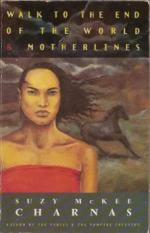|
This section contains 133 words (approx. 1 page at 300 words per page) |

|
Charnas writes within the well-developed Utopian-dystopian tradition of Huxley's Brave New World (1932) and Orwell's 1984 (1949). The tradition has its less well known, but just as strongly-rooted feminist side, dating as far back as the plays of the Duchess of Newcastle (c. 1650). A more immediate precedent would be Charlotte Perkins Gilman's Herland (1915). The 1970s saw the publication of a number of feminist utopian-dystopian novels, many of them influenced by Shulamith Firestone's The Dialectic of Sex (1970), among them Joanna Russ's The Female Man (1975), We Who Are About to . . .
(1977), and The Two of Them (1978), and Marge Piercy's Woman on the Edge of Time (1976). Important feminist dystopian novels that have appeared since Walk to the End of the World include Margaret Atwood's The Handmaid's Tale (1985) and Sheri S. Tepper's The Gate to Woman's Country (1988).
|
This section contains 133 words (approx. 1 page at 300 words per page) |

|




